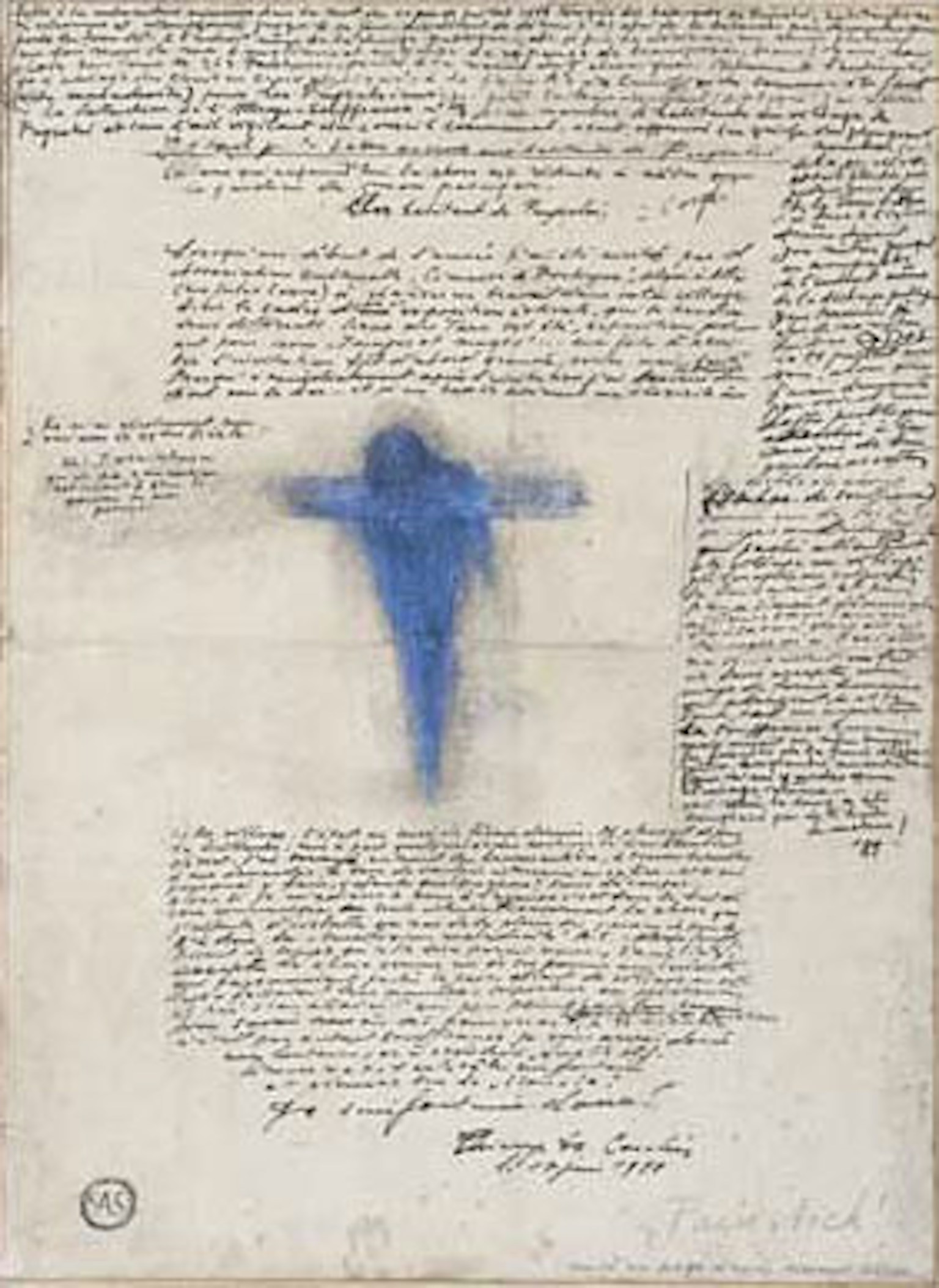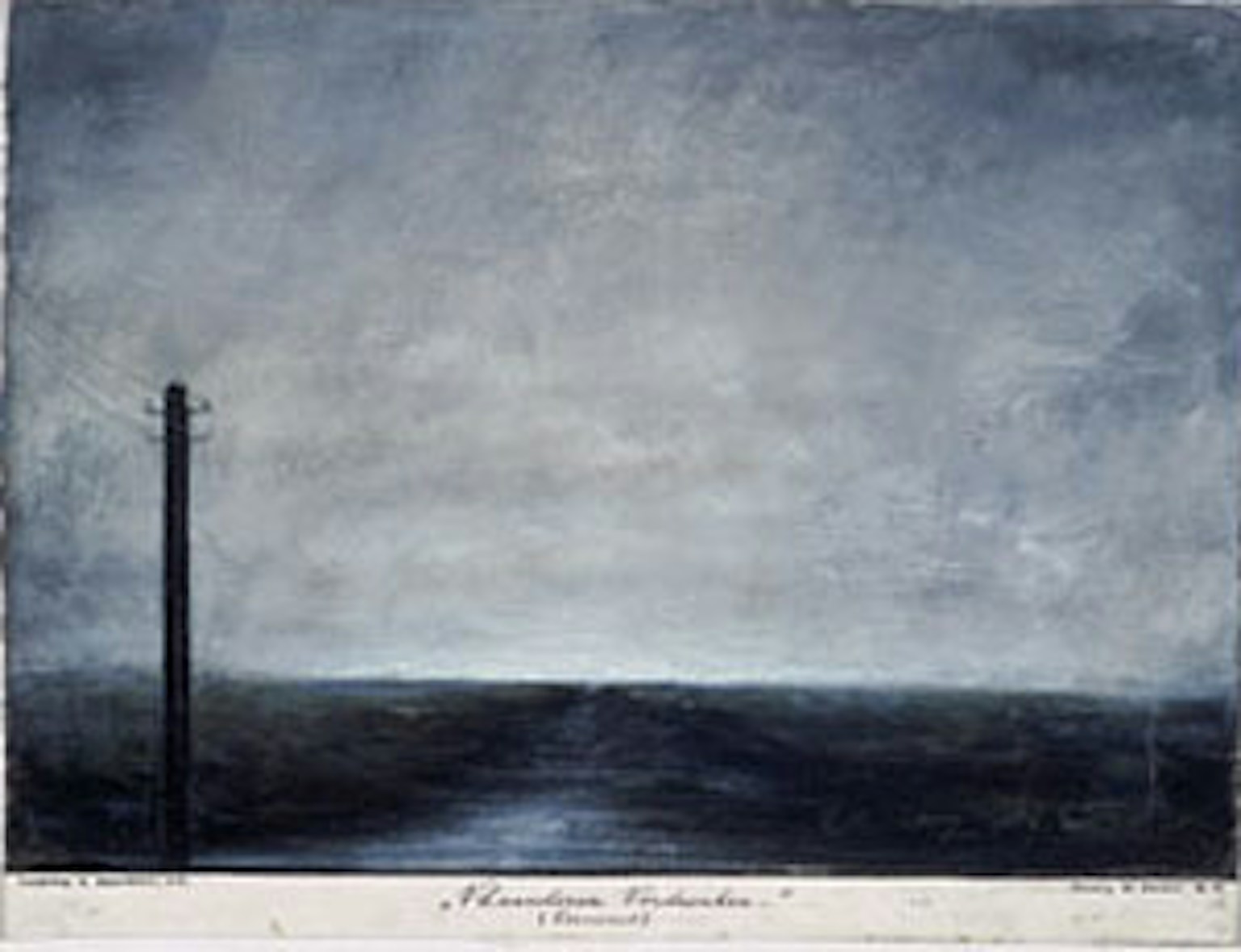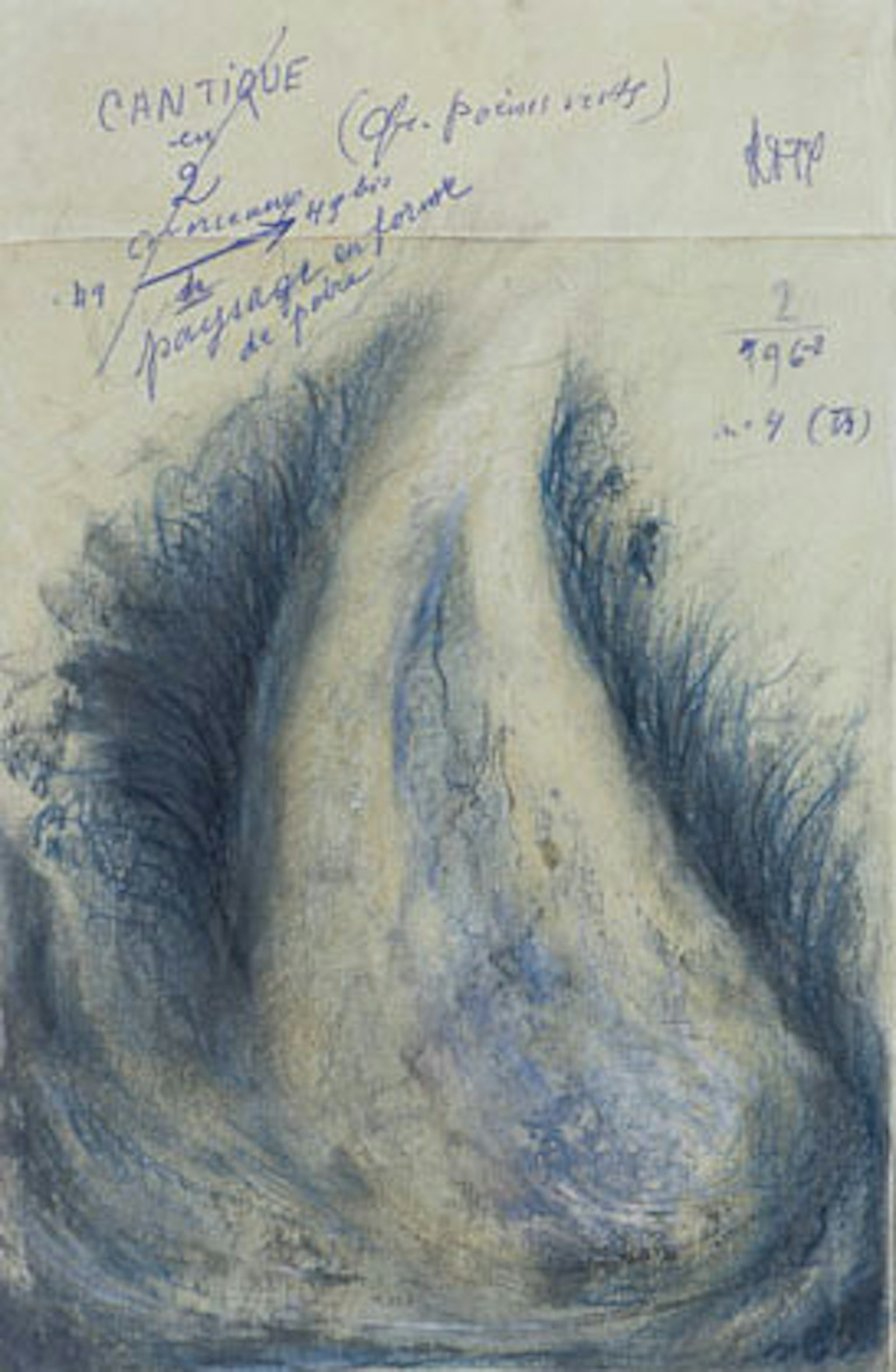Thierry De Cordier (b.Oudenaarde, 1954) is generally considered one of the most important artists of his generation.
From 11 December 1999 to 27 February 2000 the Museum of Contemporary Art (SMAK) in Ghent will be giving De Cordier’s first one-man show in a Belgian museum. It consists entirely of drawings. Most of the 100 or so works are being shown for the first time.
Thierry De Cordier’s drawings form the core of his thoughts and actions - they are the artist’s laboratory. They show, literally, the artist’s hand. They are ideas, conjecture, perceptions, considerations and musings in which the world is addressed, a church tower set on fire, a plan of the kitchen garden drawn out, a landscape metamorphoses into a vegetable or genitals. These absorbed turns of thought and emotional considerations in all their dark scepticism and originality oblige one to read as if raking them over and painstakingly exploring them. In his drawings and writings De Cordier tries to ‘learn nature by heart’. He writes as he draws and draws as he writes. He himself calls the drawings ‘tracings of the thoughts’ in his mind (one that is too heavy), the forensic traces of thinking. Sometimes they seem to be the preliminary study for a sculpture, sometimes they are ‘post-studies’ of the sculptural work. The development of the drawings is not rectilinear but cyclical. Themes that have not yet taken shape in the sculptural work are often heralded in the works on paper. Conversely, earlier motifs from the sculptural work are often reworked into drawings and writings. They are poetical proposals for the sculptor, who experiences the world and his place in it as a mystery and is himself searching, asking questions, making suggestions, leaving marks.
However, in a certain sense Thierry De Cordier’s drawings, writings and sculptures are also messages from the artist to himself: exhortations, self-reflections and relativisation, with the intention of better understanding himself and others. De Cordier chooses a position somewhere between subjective introspection and a universal philosophy of life, between misanthropy and the profoundly human need for communication. His works are on the borderline between silence and speech, between knowing and forgetting. De Cordier once wrote: ‘Je n’ai absolument rien à voire avec le XXieme siècle’ (on his sculpture ‘The Guardian of My Kitchen Garden’ in the SMAK collection, among others). This was not the statement of someone antisocial. The artist was attempting to take up a position outside his time, in order better to understand his own place, and to be able better to determine his position and, by extension, the position of his fellow humans who have been cast into this world. Just as Petrarch climbed Mont Ventoux and, from that elevated angle, saw a new and clearer image of the world, Thierry De Cordier keeps to the edge of things. And on the basis of the realisation that humans are a ‘flaw’, he develops for himself an image of the world, a sort of one-man doctrine. His creations arise from a sort of discontentment with what he is, and he always wants to escape from what he is becoming or what he is degenerating into. Thierry De Cordier once called himself a ‘Sunday thinker’, and several of his works can be seen as structures into which the artist can withdraw to think and write. They are often reminiscent of mediaeval monk’s cells and St Jerome’s studiolo. De Cordier creates his singular universe out of these real and imaginary places, with a strong belief in the metaphoric powers of images and the eloquence of materials. ‘Anyway, you don’t have to be a great connoisseur or observer to feel the unrelenting magnetic force of Thierry De Cordier’s art. It is as if you are drawn towards his work, encouraged to come closer, tempted to touch and possess it, become part of it. But the closer you come the more you feel the urge to shy away. In Thierry De Cordier’s art there is always a hidden rebuff. It is exactly when you think you have hold of the work, its idea, its maker, that you always sense the rebuff, in the asceticism, in the darkness of the black. What does this art leave us to write about? Would it not be better to remain silent? But that is just the problem: I want to keep silent, but I can’t. This work makes too much of an impression on me for that, and I cannot leave anything that moves me entirely without words. There remains so much in this art that escapes the grasp of reason and thereby creates space for desire, that I want to explain, situate and communicate my own desire. After all, this art does not behave like an object, or only as an object. It lives and moves. One might say that De Cordier goes back to that chapter of art history where the artist was seeking the cosmic unity of the elements. He twists and squeezes the elements within a single indivisible form into an all-embracing and all-consuming unity that can no longer be broken apart.’ (An extract from Jan Hoet’s catalogue essay)



